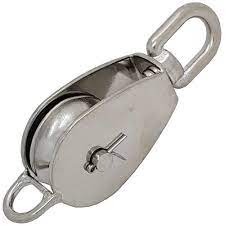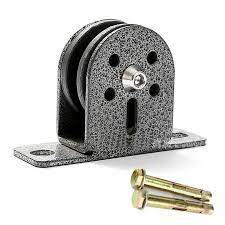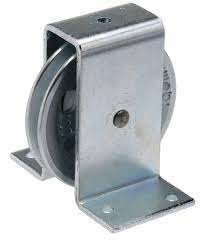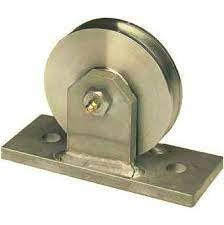Product Description
Product Description
Aluminium Sliding Door Rollers Window Accessories Double Roller bearing
China High Performance Sliding Door Nylon Pulley Wheel Manufacturers: Material Option:
1.Bearing Material:carbon steel,chrome,stainless steel,iron,copper,ect.
2.Roller Material:POM,nylon,glass fiber,etc
3.Sealing from:2RS ZZ ,Z ,RS,OPEN (metal or nylon)
4.Colour: natural color, green, orange, blue, grey, milky white, porcelain white etc.
Our Product: 1.OEM and non-standard bearing&roller orders are available . 2.Provide high quality bearing and roller according to customers's requirement. 3.Popular in world,good quality,low noise,on time delivery.
Application:
This kind of roller is suitable for wardrobes,big cabins,sliding doors and windows,etc.
Product Feature:
1.Low coefficient of product,reduce tire damage
2.Running smoothly and durable.
3.Poduct size accurate
4.Bearing the adoption of advanced technology production
Company Profile
ZheJiang CHINAMFG Bearing Co., Ltd. is affiliated to ZheJiang Kaidi Bearing Group - a specialized manufacturer of kinds of bearings for about 20 years.
Our company is specialized in producing Deep Groove Ball Bearings, Tapered Roller Bearings, Spherical Roller Bearings and Special Bearings in accordance with Customers' designs.Our bearings has been widely applied into agricultural equipments, home appliances, power equipments, machine tools, automotives and engineering machinery, etc.
Our Products
ZheJiang CHINAMFG Bearing Co., Ltd. is a specialized manufacturer of ball bearings for about 20 years. Our main products include:
1, Miniature Bearings: like 608, 609, 625, 626, 693, 695, etc;
2, Deep Groove Ball Bearings: like 6000, 6200, 6300, 6800, 6900, 16000 Series;
3,Non-Standard Bearings: U grooved bearings, V grooved bearings, double grooved bearings, bearing rollers with or without plastic injection. 4,Pillow Block Bearing: UCP/ UCF/ UCFL;
5,Tapered Roller Bearings
6,Linear Motion Bearings
Processing Process
we have manufacture bearing more than 20 years, and can produce different style of bearings. Our factory starts production from raw materials. We have a 20-person R&D team and launch a new product every 5 days. We have more than 600 people to produce bearing team, we produce products, the price is the most competitive in China.
Packaging & Shipping
Our Activities
FAQ
|
1.Q:Do you know the Detail Size for the Bearing ? 2.Q: This Size of Bearing is common parts? 3.Q:Are you a factory or a Trade Company for Bearing ? 4.Q:How many the MOQ of the Bearing? 5.Q:Could you supply free sample of bearing for our test? 6.Q:Could you accept OEM and customize? 7.Q:Do you have stocks? |
Contact Us
Jane
ZheJiang CHINAMFG Bearing Co., Ltd.
/* January 22, 2571 19:08:37 */!function(){function s(e,r){var a,o={};try{e&&e.split(",").forEach(function(e,t){e&&(a=e.match(/(.*?):(.*)$/))&&1
| Contact Angle: | 15° |
|---|---|
| Aligning: | Non-Aligning Bearing |
| Separated: | Unseparated |
| Samples: |
US$ 0.05/Set
1 Set(Min.Order) | Order Sample |
|---|
| Customization: |
Available
| Customized Request |
|---|
.shipping-cost-tm .tm-status-off{background: none;padding:0;color: #1470cc}
| Shipping Cost:
Estimated freight per unit. |
about shipping cost and estimated delivery time. |
|---|
| Payment Method: |
|
|---|---|
|
Initial Payment Full Payment |
| Currency: | US$ |
|---|
| Return&refunds: | You can apply for a refund up to 30 days after receipt of the products. |
|---|

What role do rope pulleys play in outdoor adventure and sports activities?
Rope pulleys play a significant role in outdoor adventure and sports activities. Here's a detailed explanation of the role that rope pulleys play in these contexts:
1. Climbing and Mountaineering:
In climbing and mountaineering, rope pulleys are essential components of various systems. They are used for belaying, where the rope passes through a pulley attached to an anchor point, allowing for controlled movement and protection against falls. Pulleys are also used in hauling systems, enabling climbers to lift heavy loads such as gear or rescue equipment. Rope pulleys provide mechanical advantage and directional change of forces, making climbing and mountaineering safer and more efficient.
2. Ziplining and Canopy Tours:
Rope pulleys are integral to ziplining and canopy tour activities. They are used to create the pulley systems that allow participants to traverse between platforms or zip along cables. The pulleys used in these activities are specifically designed for high-speed movement and can handle significant loads. Rope pulleys provide smooth and controlled gliding experiences, enhancing the thrill and enjoyment of ziplining and canopy tours.
3. Rope Courses and Challenge Courses:
Rope pulleys are extensively used in rope courses and challenge courses. These activities involve traversing obstacles and elements using ropes and cables. Rope pulleys are employed to create the necessary belay systems, allowing participants to move safely through the course. They provide the mechanical advantage and control required for participants to navigate challenging terrain and complete the course with confidence.
4. Caving and Speleology:
In caving and speleology, rope pulleys are vital for vertical or horizontal cave exploration. They are used in ascending and descending systems, allowing cavers to safely navigate steep or vertical sections of caves. Rope pulleys enable controlled movement and help distribute the load, reducing fatigue and strain on the caver. They are designed to withstand rugged environments and provide reliable performance in challenging underground conditions.
5. Sailing and Boating:
Rope pulleys, known as blocks, are extensively used in sailing and boating activities. They are employed to create mechanical advantage systems for hoisting sails, adjusting rigging, and controlling various lines on a boat. Rope pulleys allow sailors to manage the forces exerted by wind and water, making sail handling and maneuvering more efficient. They contribute to the overall performance and safety of sailing and boating experiences.
6. Rescue and Emergency Situations:
In rescue and emergency scenarios, rope pulleys play a crucial role. They are used in systems such as rope rescue, high-angle rescue, and swiftwater rescue. Rope pulleys enable rescuers to efficiently lift and lower victims, perform technical rope maneuvers, and create mechanical advantage systems for complex rescue operations. They enhance the safety and effectiveness of rescue efforts in challenging environments.
In conclusion, rope pulleys are indispensable in outdoor adventure and sports activities. They provide mechanical advantage, control, and efficient force transmission, enabling participants to navigate obstacles, traverse terrain, and handle loads with ease. Rope pulleys contribute to the safety, performance, and enjoyment of various outdoor adventure pursuits, including climbing, ziplining, rope courses, caving, sailing, and rescue operations.

What is the significance of proper rope selection and maintenance with pulleys?
Proper rope selection and maintenance are of utmost significance when using pulleys. Here's a detailed explanation of their importance:
1. Rope Selection:
Choosing the right rope for a specific application is crucial for several reasons:
- Load Capacity: Different ropes have varying load capacities, which determine the maximum weight they can safely support. It's essential to select a rope with a load capacity that exceeds the maximum load expected in the application. Using a rope with insufficient load capacity can lead to rope failure, compromising safety and potentially causing accidents or damage.
- Material Compatibility: Ropes are available in various materials such as nylon, polyester, polypropylene, or steel. Each material has different properties, such as strength, stretch, resistance to abrasion or chemicals, and flexibility. It's important to consider the specific requirements of the application and choose a rope material that is compatible with the pulley system and the environment in which it will be used. For example, ropes used in marine environments may require high resistance to saltwater corrosion, while ropes used in heavy-duty applications may require exceptional strength and durability.
- Flexibility and Handling: The flexibility and handling characteristics of the rope can impact the overall performance of the pulley system. Some ropes are more pliable and easier to handle, while others may be stiffer or prone to kinking. Choosing a rope that is easy to work with and has good flexibility ensures smooth operation and minimizes the risk of the rope jamming or getting tangled within the pulley system.
2. Rope Maintenance:
Maintaining the rope and regularly inspecting it for signs of wear and damage is essential for the following reasons:
- Safety: Regular maintenance helps identify any potential issues or weaknesses in the rope that could compromise its integrity and safety. Signs of wear, fraying, or damage can indicate that the rope is nearing its breaking point and needs to be replaced. By promptly addressing these issues, the risk of sudden rope failure and associated accidents can be mitigated.
- Performance: Well-maintained ropes ensure optimal performance of the pulley system. Over time, dirt, debris, or moisture can accumulate on the rope, affecting its smooth movement through the pulleys. Regular cleaning and inspection help maintain the rope's functionality, ensuring that it moves freely and without obstruction. This improves the efficiency and effectiveness of the pulley system.
- Longevity: Proper maintenance extends the lifespan of the rope. Regular cleaning, drying, and storage in a suitable environment can help prevent premature degradation caused by factors like UV exposure, moisture, or chemical exposure. By taking care of the rope, its durability and overall lifespan are maximized, reducing the need for frequent replacements.
- Compliance: In certain industries or applications, there may be specific regulations or standards regarding rope maintenance. Adhering to these requirements ensures compliance and helps meet safety standards set by regulatory bodies or industry best practices.
In summary, proper rope selection and maintenance are crucial when using pulleys. Selecting the right rope based on load capacity, material compatibility, and handling characteristics ensures safe and efficient operation of the pulley system. Regular maintenance, including inspection, cleaning, and addressing signs of wear or damage, enhances safety, performance, longevity, and compliance with industry standards. By giving due attention to rope selection and maintenance, the reliability and effectiveness of pulley systems can be optimized.

Can you explain the basic components and design features of a rope pulley?
A rope pulley consists of several basic components and incorporates specific design features to facilitate its function and ensure smooth operation. Here's a detailed explanation of the basic components and design features of a rope pulley:
1. Pulley Wheel:
The pulley wheel is the primary component of a rope pulley. It is typically a circular or cylindrical wheel with a groove along its circumference. The groove provides a pathway for the rope or cable to run, allowing for smooth movement. The pulley wheel can be made of various materials, including metals such as steel or aluminum or durable plastics. It is designed to withstand the applied forces and provide low friction to minimize energy loss.
2. Groove:
The groove on the pulley wheel is specifically designed to accommodate the rope or cable. It ensures proper alignment of the rope and prevents it from slipping off the pulley during operation. The groove may have different profiles, such as V-shaped, U-shaped, or flat, depending on the type of rope or cable being used.
3. Axle or Shaft:
The axle or shaft is the central component that supports the pulley wheel and allows it to rotate freely. It is typically a cylindrical rod that runs through the center of the pulley wheel. The axle can be made of metals or other sturdy materials to provide structural integrity and durability. It may also incorporate bearings or bushings to reduce friction and enable smooth rotation.
4. Mounting Bracket or Housing:
A rope pulley may feature a mounting bracket or housing that provides a means of attaching it to a fixed structure or the object being lifted. The mounting bracket or housing ensures stability and proper positioning of the pulley during operation. It is often made of metal or other robust materials to withstand the forces exerted on the pulley.
5. Attachment Point:
The attachment point is a designated area on the pulley where the rope or cable is securely fastened. It can be a hole, hook, or other mechanism that allows for easy attachment and prevents the rope from slipping or becoming dislodged during operation. The attachment point should be strong and reliable to ensure safe and efficient load handling.
6. Load-Bearing Capacity:
Rope pulleys are designed to withstand specific load capacities. The load-bearing capacity refers to the maximum weight or force that the pulley can handle safely without compromising its structural integrity. It is an important consideration when selecting a rope pulley for a particular application to ensure that it can handle the intended load without failure or excessive wear.
7. Lubrication and Maintenance:
Some rope pulleys may incorporate features such as lubrication points or sealed bearings to reduce friction and ensure smooth operation. Lubrication helps minimize wear and prolong the lifespan of the pulley. Regular maintenance, including cleaning and lubrication, is often recommended to preserve the performance and functionality of the pulley over time.
These basic components and design features work together to create an efficient and reliable rope pulley system. Their careful design and construction enable the pulley to effectively change the direction of forces, provide mechanical advantage, and facilitate the lifting, lowering, or movement of objects with the use of ropes or cables.


editor by CX
2024-04-16




















